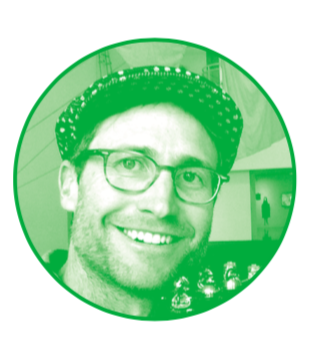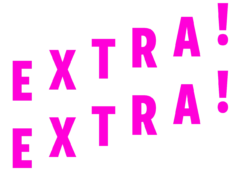by Lucas Ihlein
Lucas Ihlein is an artist and member of Big Fag Press and Kandos School of Cultural Adaptation.

This week the EXTRA!EXTRA! team was joined by Boni Cairncross and Louise Curham, who completed a “one-day-residency” in the gallery. Artists who engage with the problematics of live art, Boni and Louise were tasked with coming up with a rapid response to Making Art Public. What happens after an ephemeral, site-specific work is finished? How can we experience it after the fact? What works and what doesn’t? And how can we activate the archives so that the public can “feel” what the original experience might have been like? In an exhibition like Making Art Public which consists of a range of diverse “leftovers”, these are pressing questions for audiences and art historians alike.
Here at EXTRA!EXTRA! we’re exploring the links between art and journalism, between the conventions of aesthetics and the rules of the world beyond the art world. Artworks do not appear miraculously in a vacuum, isolated from the social, political, and environmental goings-on of this planet – but sometimes we act as if they do. EXTRA!EXTRA! takes seriously its responsibility to remind visitors to the pleasantly air-conditioned Art Gallery of NSW that we are all connected to the climate crisis, the dominant narrative of our times, and this is tackled by Wendy Bacon in her enquiry into the ethics of reportage on global warming.
What subject matter is considered “relevant” or “proper” for an artwork? This is an ongoing question for Chris Nash in his series of articles which investigate the turbulent events surrounding prominent German-American artist Hans Haacke, one of the early adopters of institutional critique – a mode of artmaking which draws attention to the political machinations of the artworld itself. Haacke’s battles with museums, fought using the weapon of fact-based art reportage, were instrumental in paving the way for more transparent institutional structures – and these developments were all happening at the same time that Kaldor Public Art Projects was just starting out in Australia.
Finally, as part of her series exploring the relationship between land art and acknowledging country, Juundaal Strang-Yettica reflects on her emotional response to Christo and Jeanne-Claude’s Two wrapped trees (1969) – box number 9 in the exhibition. Juundaal, a Bundjalung-Kanakan woman living in Wollongong, provocatively and poetically proposes the repatriation to Country of Two wrapped trees. What processes of respectful consultation with Traditional Owners, and what administrative processes of de-accession would be required for the AGNSW to carry out such a repatriation?
